Trip Logs
Classic Antarctica Trip Log: January 7–19, 2019

January 7, 2019 | Ushuaia, Argentina
We converged on the small city of Ushuaia, the gateway to Antarctica. Our flights provided a dramatic panorama. Clouds parted every so often, revealing the breathtaking southern Andes. The glaciers, lakes and soaring peaks had to be seen to be believed, and the mesmerizing scenery seemed to go on forever.
Ushuaia is a growing outpost filled with restaurants and shops catering to travellers with an adventurous spirit. Enjoying the unique distinction as the southernmost town in the world, Ushuaia is locally known as El Fin de Mundo — The End of the World. Interestingly, the name means “inner harbor to the westward” in the native Yaghan tongue. The town has grown rapidly in recent years, but still maintains its frontier-town feel, with streets of small houses and every kind of architecture. On the hillside behind the old town, untidy clusters of new houses appeared in the clearings within the native forest.
By late afternoon, we boarded our beautiful ship, ‘Le Lyrial’ for our luxury Antarctica cruise. Inside, we were shown to our cabins, where our complimentary parkas, backpacks and water bottles had been neatly arranged. Once we had settled in, we toasted the start of our expedition with a celebratory glass of Champagne in La Comète, one of two restaurants on board. We spent some time on the pool deck and then gathered for a mandatory lifeboat drill at the muster station, where we learned how to don life vests and navigate to the lifeboats.
Next, we gathered in the theater. Expedition Director Suzana Machado D’Oliveira welcomed us aboard, and Cruise Director Paul Carter outlined the luxury facilities available to us as well as the routine of daily life at sea. Paul was followed by Expedition Leader Dr. Marco Favero, who explained how changing conditions in this part of the world, such as weather and ice, require his team to work closely with the Captain to create flexible backup plans.
Suzana introduced Captain Mickael Debien, who welcomed everyone aboard. He promised there would be opportunities to visit the bridge, an experience offering not only superb views but the opportunity to see how the ship operated. We also met our wonderful A&K Expedition Team, who had come from countries throughout the world — the United States, the United Kingdom, New Zealand, Argentina, Uruguay, Chile, Costa Rica and the Philippines. They briefly introduced themselves and shared with us some of their responsibilities. Many members of the team have several decades of experience working in Antarctica. One has more than fifty.
After dinner, we retired to our cabins early for a good night’s rest, looking forward to a refreshing cruise across the Drake Passage on our way to Antarctica.

January 8, 2019 | Crossing the Drake Passage
In the early hours of the night, ‘Le Lyrial’ arrived at Port Williams, where a barge came out to bunker our ship. Once our fuel tank had been filled, we continued down the Beagle Channel. The sun rose into a pale blue sky around 4:00 a.m., and the only indication that we were moving was the rumble of the engine, the creaking of closet doors and the gentle swaying of our stateroom drapes.
Our day would include four enrichment lectures, beginning with ornithology lecturer Dr. Maria Patricia (Patri) Silva Rodriguez’s “Seabirds of the Southern Ocean.” She introduced us to a large group of Procellariiformes, incredible seabirds that would accompany ‘Le Lyrial’ throughout the Antarctica cruise. The group includes the giant albatross and many smaller species such as the black-and-white-checkered Cape petrel, gray prion and the diminutive storm petrel. One of the more unique characteristics of the Procellariiformes is their tube-shaped nostrils, which have a well-developed sense of smell. Some species among this group use this ability to locate their nesting sites at night. They are even better known for their effortless flight capabilities, dependent on the winds that sweep over the vast oceans of our world. Patri went on to share some of their history, paying special attention to the most common species we may see out here in the Southern Ocean.
Photo coach Richard Harker followed up with “Photographing Antarctica: What to Expect and How to Prepare.” We enjoyed a preview of the exciting things we may see throughout our expedition, and with Richard’s help, we would impress our family and friends with some truly dramatic shots.
Outside, giant petrels, black-browed albatrosses, Cape petrels and a variety of other species surrounded the ship. These seabirds cover thousands of miles in pursuit of their prey, and we now know they use their keen sense of smell to search for food. Unfortunately for us, they tend to stay in constant motion while in flight, which makes them a challenging target for a camera scope.
Donning bright-yellow parkas, the A&K Expedition Team were on hand to help identify the albatrosses and their relatives following in our wake. They also kept a keen eye on the waters in case any whales decided to show up.
In the afternoon, Larry Hobbs, marine mammal lecturer, presented “Marine Mammals of the Southern Ocean: Where Blubber and Bad Hair Days Are Not a Problem.” Providing an overview of the evolution of whales, he also identified the two main types of whales: toothed, which include dolphins and porpoises; and baleen, which consume krill and fish using a sieve. We were excited to have an opportunity to see humpback whales and even an orca — Antarctica’s top predator — among other species.
Dr. James (Jim) McClintock, climate change lecturer, presented the day’s final talk: “Impacts of Rapid Climate Change on the Antarctic Peninsula.” Rising sea and air temperatures continue to plague the continent — the result of a hole in the ozone layer, a protective barrier that absorbs ultraviolet radiation. Glaciers are receding at unprecedented rates, and floating ice shelves — hundreds of feet thick and attached to land — are breaking off huge tabular icebergs. These icebergs float away and slowly melt, and marine life suffers as a result.
The Adélie penguin, whose life is closely tied to the annual sea ice, is becoming less and less common around Palmer Station, the only U.S. research facility located north of the Antarctic Circle. Warmer, more humid conditions have triggered storms that bury nesting penguins in snow. When that snow melts, the eggs vanish below the surface. Fortunately, more than 190 countries collectively enforce regulations to prevent the release of refrigerants that damage the ozone layer, and scientists predict that the hole is likely to close by midcentury.
Tonight, during the Captain’s Welcome Aboard Cocktail Party, we celebrated the start of our voyage with some drinks and lively conversation.

January 9, 2019 | At Sea
Shipboard life proceeded at its usual gentle pace. In the theater, Patri gave her second talk entitled “Birds in Tuxedos: Why Do They Look So Different?” She said that of the more than 8,800 species of birds in the world, penguins are like no other. We learned about Adélies, which march many miles over the sea ice in October to reach their breeding colonies; macaroni penguins, which lay two eggs of differing sizes; and the emperor and king penguins, the two largest of the penguin species. King penguins live to the north, namely the Falkland Islands and South Georgia, whereas emperor penguins live in the far south, where they lay their eggs on the sea ice in the depths of winter.
Before lunch, Suzana taught us how to use the Zodiacs, the inflatable rubber boats we would be using throughout our voyage. Next, naturalist guide Russ Manning demonstrated how to dress appropriately for these cruises. Marco gave a mandatory briefing on the International Association of Antarctica Tour Operators (IAATO) guidelines for proper conduct ashore. These regulations ensure that our visits would be managed safely, and that the wildlife would not be disturbed by our presence.
By the middle of the day, we reached the beautiful South Shetland Islands, which back in 1819, were the first part of the continent to be discovered. We crossed the Drake Passage and proceeded through the English Strait, and in the late afternoon, we arrived at the Aitcho Islands. Because the calm seas had allowed for a rapid passage from Ushuaia, there was time to explore on land.
The scenery was brilliant. The mountains stood out against the sky, and the glaciers glistened in the sunlight. Barrientos Island was mostly free of snow, making for an easy walk up the slope from the beach to the small colony of chinstrap and gentoo penguins. Their chicks, who were tucked away in the nests, were about two weeks old. We watched the parents feed them, and were sure to keep a distance of at least 15 feet so as not to bother them. There was even a surprise appearance made by a king penguin standing alone on the beach. King penguins typically breed in South America and South Georgia, and are rarely seen so far south. We also saw giant petrels, as well as Antarctic skuas attacking penguin chicks. While sad to witness, predation was part of the great circle of life.
History lecturer Bob Burton presented “My Favorite Heroes: The Heroic Age of Antarctic Exploration.” He examined what was arguably the most intriguing era of Antarctic history — the time of Amundsen, Scott and Shackleton from 1895 to Shackleton’s death in 1922. We learned there had been 17 expeditions to Antarctica during this period, commissioned by the U.K., Belgium, Norway, France, Sweden, Germany, Australia and Japan. These expeditions explored the harshest environment in the world with inadequate equipment and succeeded against all odds. Bob shared stories including Scott’s Last Expedition, where three men trudged through a bitter Antarctic night to collect emperor penguin eggs; and a solo trek undertaken by Australian explorer Sir Douglas Mawson after Mawson’s two companions had perished — a triumph of mental strength over physical adversity.
In the evening, we sighted a dozen humpback whales from the ship. We were happy to hear that their population is recovering from whaler attacks. Humpbacks are often spotted by Antarctic vessels, and it is easy to approach these beautiful animals without causing a disturbance. ‘Le Lyrial’ was able to maneuver close to three of them, and we were treated to a grandstand view. We were fortunate enough to catch them in the act of lunge feeding, a strategy unique to the rorqual family of baleen whales. When feeding in this manner, humpbacks surge forward with their gaping maws and swallow hundreds of pounds of food — usually fish or krill — at a time. We were also privileged enough to catch their flukes on display, and learned that humpbacks can be identified by the trailing edge and shape of the notch.

January 10, 2019 | Brown Bluff & Gourdin Island, South Shetlands
‘Le Lyrial’ was already anchored off Brown Bluff when we got up, and the early risers got to see a humpback whale cruising around the ship. Our destination was the rarely visited Brown Bluff, named for its vertical cliff face of rust-colored rock.
The main interest on Brown Bluff was a breeding colony of 60,000 pairs of Adélies, seen together with a small number of gentoos. Adélie chicks were about three weeks old and had begun to gather into flocks called crèches. These formations help protect young chicks from predators and subzero temperatures. Leaving chicks behind in this way also frees up both parents to make a trip out to sea to gather food, enabling them to keep pace with the rapid growth of their progeny. A steady stream of adults were leaving the colony and marching along the edge of the beach. Then, they gathered into a tight flock, and after signaling to one another, made a mad dash into the water, squawking boisterously. Penguins prefer to face the sea as a group because they’re less likely to be taken out by a leopard seal.
Later, geology lecturer Dr. Daria Nikitina shared some interesting factoids about Brown Bluff. The upper brown-colored rocks are pyroclastic, which consist of compacted layers of cinder and ash that have been catapulted from a volcano. The black rocks below are pillow lavas that formed in freshwater beneath the ice. NASA came to Brown Bluff to study these rocks because they believe there are similar rocks on Mars. Behind the beach, we found large wind-sculpted rocks called ventifacts.
‘Le Lyrial’ steamed back through Antarctic Sound, named for the ship used by Otto Nordenskjöld — Swedish geographer and explorer — during the fateful 1901 Swedish Antarctic Expedition. In the afternoon, there was a change of tempo as we cruised Gourdin Island on a Zodiac. Wind and waves made the ride more exciting, and because visibility had deteriorated, there was a beautiful sense of atmosphere. From our rafts, we could see a huge colony of Adélies. Some leaped from the water, and as we came closer to the shoreline, some of these penguins even passed us. We were also lucky enough to spot a Weddell seal dozing off on an ice floe, an attractive species characterized by spotted coats and cherry faces.
After lunch, Daria presented “Geology of the Antarctic Peninsula: Old Continent Under the Icecap.” She explained that the rocks here are 3.9 billion years old. Antarctica used to be part of a supercontinent known as Gondwana that broke apart roughly 180 million years ago. Volcanic rocks began to intrude upon existing rocks, and continents started to break apart. We learned about continental rift and volcanoes, specifically that Mount Erebus is the southernmost active volcano in Antarctica. Daria also explained that around 300 million years ago, North America and Europe collided with Gondwana, which formed the supercontinent of Pangea. When Pangea began to drift apart, the continents repositioned to the geographic locations we know today.
For our day’s last activity, a surprise general knowledge quiz was held in the Grand Salon, hosted by Paul. Teams consisted of six contestants, and the winners were rewarded with a fine bottle of Champagne.

January 11, 2019 | Mikkelsen Harbor & Spert Island, Trinity Island
We awoke to a blue sky and fiery sun. Marco had made the decision to head south overnight. The weather forecast had predicted strong winds in the South Shetland Islands, and there appeared to be calmer weather farther south in the Palmer Archipelago. Our A&K Expedition Team adjusted the program accordingly in order to provide us with the best experiences.
After breakfast, we made our landing at Mikkelsen Harbor, named for Klarius Mikkelsen, captain of a whaling ship that mapped several sections of previously unknown coastline. Interestingly, Mikkelsen’s wife, Caroline, was the first woman to set foot on the Antarctic mainland back in 1935. Whaling ships moored here during the 1920s in order to carry out their gruesome occupation. The shore was littered with a couple of old whaling boats, along with a tangle of huge bones almost completely buried beneath the deep snow — all that remain of the blue whales that were slaughtered a century ago.
Whale catcher boats used to haul in whale carcasses to be flensed alongside the factory ship. After flensers sliced the blubber into strips, they were winched on board, cut into small pieces and fed into pressure cookers, where the oil was extracted. Because the vessels did not have the distillation capacity to supply enough water to power the machines, whaling anchorages were tasked with storing a freshwater supply, which was ferried to shore on special boats.
In the mid-1920s, older factory ships were replaced by pelagic factories equipped with a slipway in the stern. These ramps allowed the crew to haul whale carcasses onto the deck. With the advent of such technology, it was now much easier to process the meat and bones, and more importantly, whaling could now take place on the open seas away from the harbors. As an interesting fact, we also learned that a third of the oil is found in the bones.
Beyond the whale remnants, we crossed paths with a dozen Weddell seals lying on the snow and basking in the sun. We travelled over a worn trail at the top of the island to a gentoo colony, where penguins could be seen incubating. From time to time, a parent stood up to feed, and we could catch sight of a chick. Near the colony was the well-maintained Capitan Callet Bois Hut, which was erected by the hydrographic department of the Argentine Navy in 1954 as a refuge and to bolster Argentina’s claim to this part of the continent.
The afternoon’s program was weather-dependent, but recon revealed a good chance of a Zodiac cruise around Spert Island, a small neighbor of Trinity Island. Clouds covered the sky, and a chill wind necessitated extra clothing for the ride. A small channel led to a lagoon, where we found ourselves surrounded by high vertical basalt cliffs. The real attraction, however, was a pod of humpbacks that were surfacing as they fed. We also had amazing views of a mother and her calf, their tail flukes flipping gracefully in mid-dive.

January 12, 2019 | Cuverville Island & Neko Harbour
Favorable weather continued, with little wind and a warm sun breaking through high clouds. The bell-shaped Cuverville Island was discovered by Adrien de Gerlache — an officer in the Belgian Royal Navy — during the Belgian Antarctic Expedition and named for Vice Adm. J.M.A. Cavelier de Cuverville of the French Navy. With steep slopes sprawling with moss and lichen, the island remains one of the greenest places on the continent.
The landing site is almost always impeded by stranded icebergs, and today was no exception. The more physically active members of our party went ashore with Russ to climb the side of the 815-foot hill that makes up most of the island. Blankets of snow slowed our ascent, and we only got as far as a plateau halfway up the hill. We were privileged to a wonderful view of the surrounding iceberg-studded sea and icy mountains in the distance. Those who stayed behind were content visiting a colony of gentoos, who were busy stealing rocks from rival neighbors’ nests. After, we embarked on a Zodiac cruise among the icebergs, whose strange shapes were difficult to describe.
We returned to the ship, made anchor and steamed down the Errera Channel, one of the most stunning places in the region. Clouds floated above the highest mountains, and patches of sunlight illuminated the peaks with pastel shades.
After exiting the channel, ‘Le Lyrial’ turned into Andvord Bay. We enjoyed a delicious lunch, and then boarded the Zodiacs for a refreshing ride to Neko Harbour. At the back of the harbor was an imposing wall of ice, where a glacier dropped almost vertically into the sea. Occasionally, a roar would split the air, followed by a crash as an iceberg tumbled down the cliffs and splashed in the water. On the other side of the anchorage, distant mountains decorating Anvers Island rounded out a spectacular panorama. It was unusual that the 9,055-foot Mount Français, the highest mountain in the area, was completely visible, so we counted ourselves lucky.
We decided to make the hike to the ridge, and along the way, we were pleasantly distracted by small clusters of nesting gentoos. Once past the penguins, we ascended a steep snow-covered hill and worked our way back to an outcropping from which we could see Andvord Bay in its entirety. We also took a slide down the snow slope, and it was so much fun that many of us walked all the way back up just to do it again.
The landing beach was an excellent location to watch the penguins coming and going from the water. When they returned from the sea, they would move across the penguin highways carved into the snow by other penguins that had taken the path before them. Penguins marching up the hill were clean and fat with krill, while those coming down were soiled with guano and ostensibly hungry.
While some of us were out on the Zodiacs, others joined Bob in the theater for “Penguins to the Rescue: The Unsung Role of Penguins in Antarctic Exploration.” He went on to tell us that during the first voyages to the south seas in the 16th century and through the Heroic Age of the 20th century, penguins were used as a source of food. Sailors would feast on penguin meat and the large, nutritious eggs they hatched — a useful supplement to salted or canned meat rations. Even more noteworthy, penguins provided a last resort for expedition teams that became stranded, often saving entire crews from certain death. Penguin skins could be used for clothing, and penguin blubber could be burned to create heat for warmth and cooking. Bob shared many stories of men whom, after having been forced to overwinter, survived because they lived off the land.

January 13, 2019 | Port Charcot & Salpêtrière Bay, Booth Island
Before breakfast, Captain Debien set course for Port Charcot, taking ‘Le Lyrial’ on a winding path between sparkling icebergs. French explorer Jean-Baptiste Charcot navigated the bay back in 1904 and overwintered his ship ‘Français’ there. The bay is named by him for his father, a French neurologist.
From the landing site, there was a short climb over some smooth rocks, which led to a long ridge. After a round of photographs, we followed the path and discovered a penguin colony containing what Patri described as the “grand slam” of brush-tailed penguins: gentoos, chinstraps and Adélies. There were also blue-eyed shags flying about, which resembled long-necked penguins. From the top of the ridge, we looked out over the sea, where a myriad of glaciers shimmered in the sunlight. This place is sometimes called an iceberg graveyard because many icebergs are carried here on the prevailing current and left stranded. Many of us swiftly deployed our cameras and captured some gorgeous photographs. In the other direction was a trail that led to a cairn commemorating Charcot’s French Antarctic Expedition, and the view from the top was truly enchanting.
In the afternoon, we hopped aboard the Zodiacs and cruised among the icebergs in Salpêtrière Bay. Up close, the shapes and colors of the floating ice were vivid and almost bewitching. Crabeater and leopard seals rested on ice floes, and showed no interest in our cautiously approaching rafts. By contrast, other leopard seals were rather inquisitive and swam right up to our boats. It was by far the best Zodiac ride we had, and as the icing on the cake, glasses of Champagne were dispensed to celebrate our successful cruise.
Later, Jim presented “Drug Discoveries in Antarctic Seas,” introducing a subject we didn’t even know existed. Along with his colleagues — chemist Bill Baker and seaweed ecologist Chuck Amsler — Jim spent half a lifetime studying why Antarctic marine plants and animals produce toxic chemicals. These same chemicals kill harmful bacteria and even cancer cells, and Antarctica is filled with organisms armed with a diverse cocktail of chemicals that could have medicinal applications. It’s easy to see how this field of research would prove monumentally advantageous to humankind. Unfortunately, climate change is rapidly threatening the very species that may hold the key to curing cancer and other horrible diseases.
The evening’s entertainment was a cruise through the famous Lemaire Channel — an amazing seven-mile-long, one-milewide passage between Booth Island and mainland Antarctica. Flanked by glaciated peaks soaring over three thousand feet on the mainland, the channel is nicknamed “Kodak Alley” and remains a must for any voyage to the Antarctic Peninsula. It is beautiful beyond measure, and visited by nearly every cruise vessel that comes here. Not every ship makes it through, however. The Lemaire Channel is often choked with icebergs and ice floes, making the route impassable. For this reason, we were forced to turn back to Deloncie Bay. The sun appeared to set fire to the sea and ice, and we were dazzled with a kaleidoscope of colors.

January 14, 2019 | Torgersen Island & Palmer Station
‘Le Lyrial’ had anchored in Arthur Harbour off Anvers Island last night. The weather was overcast with some wind, but it was still pleasant outside. In the morning, we cruised around Torgersen Island on Zodiacs, not far from Palmer Station, which is known for its Adélies. According to studies, numbers have dropped by 90 percent in recent years due to climate change. The pack ice serves as a vital feeding ground in the wintertime, and has been steadily decreasing. On the other hand, the absence of ice benefits gentoo penguins, whose population has seen a dramatic increase.
Apart from Adélies and ice sculptures, we also enjoyed superb views of elephant seals and even a lone fur seal. Sadly, fur seals were almost wiped out after sealers began targeting them for their fur in the 19th century, and their numbers have not fully recovered on South Georgia Island. However, they are currently spreading throughout the South Shetlands and reappearing down the Antarctic Peninsula. On our return trip, we enjoyed a fascinating briefing about Palmer Station, and the American guests learned how their tax dollars are being spent. Station manager Bob Farrell told us a little about the place. Named for Nathaniel B. Palmer, a sealer who explored the Antarctic Peninsula in 1820, Palmer Station was built in 1965 and is administered by the National Science Foundation.
Science lab manager Randy Jones gave a quick overview of the 48 research programs at the station. He went on to explain Antarctica’s role in global systems, and how international cooperation is essential for research programs to gain any ground. After, scientists Schuyler Nordelli and Jack Conroy described the work performed by the Palmer Long-Term Ecological Research program. At the end of our briefing, Jim called up a number of us to join him and presented a gift: a dissolved carbon dioxide sensor. The device was funded by A&K Philanthropy and will be used to measure carbon dioxide levels in the sea. As these levels increase, seawater becomes more acidic, which makes it harder for animals such as mollusks to build their shells.
Later, we enjoyed a savory barbecue lunch on deck. Then we paid a visit to Palmer Station. Visits by cruise ships are limited to nine per year in order to minimize disruption to station workers. Fortunately, we were privileged visitors and made especially welcome because of our ties to Abercrombie & Kent Philanthropy, which contributes important scientific equipment to the station. It was interesting to see what life was like on an Antarctic research station. Our guides showed us the laboratories and support rooms, and were more than happy to chat about their time on the icy continent. Rounding off the experience was an opportunity to shop for souvenirs, and sample coffee and “world-famous” brownies at the canteen.

January 15, 2019 | At Sea
By morning, we were well inside the Drake Passage, with open waters ahead. The passage is notorious for its gales and rough seas, a result of the westerly winds that sweep unchecked around the world and get funneled between South America and the Antarctic Peninsula. ‘Le Lyrial’ steamed south, and we were lucky that sea conditions were calm. Interestingly, the Drake Passage is named for the English privateer Sir Francis Drake, who aboard his ship, ‘The Golden Hind,’ became the first Englishman to circumnavigate the globe. From Drake, we learned that the parcel of land known as Tierra del Fuego was never part of Antarctica.
Today, we would pack for the journey home and continue our enrichment lecture program. There were also opportunities to visit the bridge, or join the naturalists on the pool deck to spot seabirds and whales.
Larry led a lively and well-informed lecture entitled “The Underpinnings of Climate Change: Discovering Sustainability Through a Life of Work in the Wilds.” It was fascinating to learn about his past life studying a diversity of marine mammals, from whales to sea lions. Larry was among the pioneers who began outfitting these animals with recording devices. Over time, he became interested with what we as a species are doing to our planet, and what sort of future awaits humanity. After all, the human population is growing at an unprecedented rate. There are currently almost seven billion people on Earth, and the number is only rising. Global warming effects on Antarctica are also a problem. Antarctic fish, for instance, have low tolerance to changes in temperature. Declines seen in the numbers of larger animals, such as whales, narwhals, walruses and polar bears, remain a global concern. Larry believes that sustainability in the long-term must be questioned.
Next, Daria presented “Is Antarctica Melting?” Whether the continent is warming or cooling at present has been a question of intense debate and uncertainty. Owing to its small size and northern latitude, the Antarctic Peninsula remains highly sensitive to climate change. Data from weather stations and satellites show that Antarctica as a whole has been warming over the last 50 years. While temperatures in East Antarctica appear rather stable, West Antarctica and the Southern Ocean have been warming. Floating ice shelves around the continent play a fundamental role because they prevent the flow of ice from entering inland Antarctica. Icebergs calving off from glaciers account for about ninety percent of ice loss here, and presently, 87 percent of Antarctica’s glaciers are retreating.
In the afternoon, Marco and Patri explored the disastrous effect of longline fishing in “Seabird Conservation in Fisheries.” Longlining claims the lives of thousands of albatrosses and smaller seabirds every year. In fact, some species will become extinct if the fatality rates are not kept in check. Sadly, birds seize the baited hooks and drown as the lines are dropped over the side of fishing vessels. The good news is that there are ways of circumventing this slaughter, and the Save the Albatross program is working hard to implement them.
In what would be the day’s final lecture, Richard presented “In the Footsteps of Ansel Adams: Processing Like the Masters.” He taught us the value of processing digital images with software such as Photoshop. In a wet darkroom, Richard compared the work Adams (famous for his photos of Yosemite National Park) completed in the mid-20th century with the computer work completed today by digital photographers. We concluded that if Adams were alive today, he would support image processing too.
At last came the grand finale of the cruise, the Captain’s Farewell Cocktail Party. The noise level was noticeably higher than the welcome gala, and this time around, we met as friends rather than strangers.
January 16, 2019 | Sailing the Beagle Channel
The wind had acted up throughout the night. By morning, we enjoyed a pleasant tailwind as our ship maintained an even keel. South America came into view during breakfast, and it wasn’t long before we had entered the Beagle Channel.
Bob presented the last of the enrichment lectures: “When I Was a Lad: Two Years in Antarctica.” We learned that Bob had spent two winters on a British Antarctic Survey research station on Signy Island in the early 1960s. Unlike other nations, Britain sent men to Antarctica for two years’ overwintering. This not only gave scientists time to collect good data, but overlapping personnel ensured there were experienced men in the station at all times. Bob shared stories about what life was like in a small and isolated community of young men, and managed to work in the adventures of Ginge the cat while he was at it.
Some of us joined the naturalists on the pool deck for some birdwatching. Compared to the deep south of the Drake Passage, there was even more to see once we entered the Albatross Zone. Black-browed albatrosses and sooty shearwaters effortlessly glided around the ship as we advanced up the Beagle Channel. Cape petrels and diminutive Wilson’s storm petrels flitted to and fro. We also spotted Magellanic penguins, and soon realized they were the last of these animals we would see on our journey.
In the afternoon, Jim spoke to us about “Diving Under Antarctic Ice.” We learned that swimmers gain access through a small hole in the ice to reach the chilly waters. But before taking the polar plunge, safety protocols must be followed. Jim’s photos proved that these precautions are worth the effort, as life on the seabed is surprisingly rich and varied.
Later, we joined the A&K Expedition Team for “On Expedition.” During the gathering, we reviewed our spectacular voyage and chose a winner for the Crew Welfare Fund raffle. The A&K Expedition Team presented a fantastic slide show compiled by “Blackjack” Piracy Productions” consisting of photos and video clips that traced the entire voyage from beginning to end.
‘Le Lyrial’ proceeded up the Beagle Channel, and we approached Ushuaia by late afternoon. Dense gray clouds had lifted, exposing the snow-covered flanks of the cordillera and gracing the city with a stunning backdrop. There were no crosswinds, which made docking a breeze.
Tomorrow, we would leave and go our separate ways. Perhaps one day, we would meet again aboard one of A&K’s Arctic expeditions for another extraordinary adventure. Although it is sad to say goodbye, we would not be leaving empty-handed; we had photos; videos; journals; and most importantly, vivid memories of a land almost too magical and captivating to describe. Shackleton wrote: “Indeed the stark polar lands grip the hearts of the men who have lived on them in a manner that can hardly be understood by the people who have never got outside the pale of civilization.”
 The Americas
The Americas Europe, Middle East and Africa
Europe, Middle East and Africa Australia, NZ and SE Asia
Australia, NZ and SE Asia




































































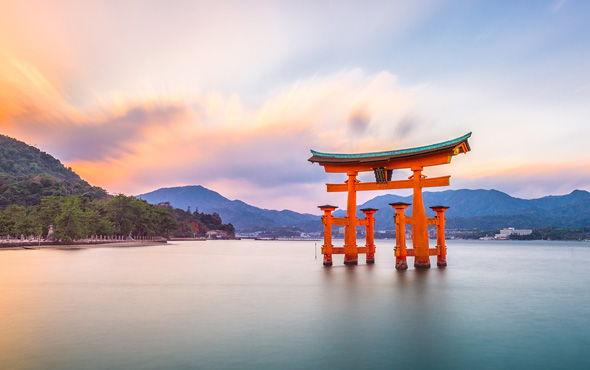
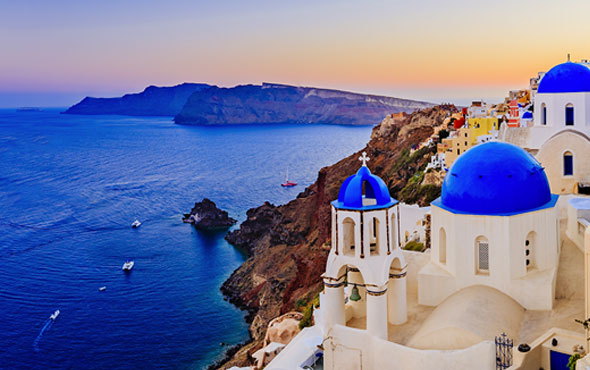
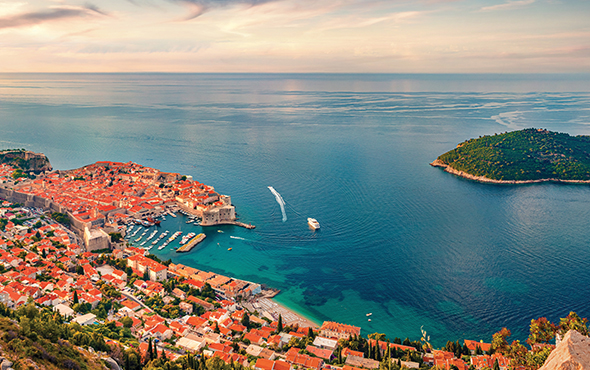
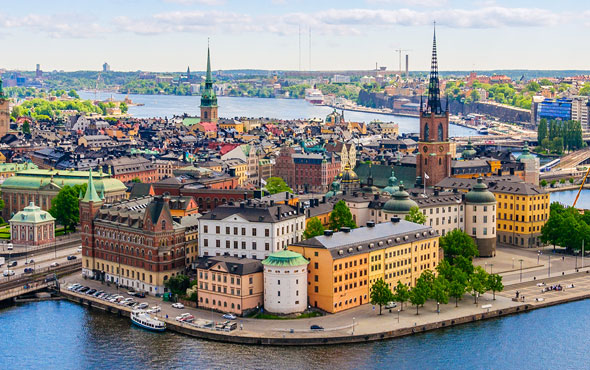





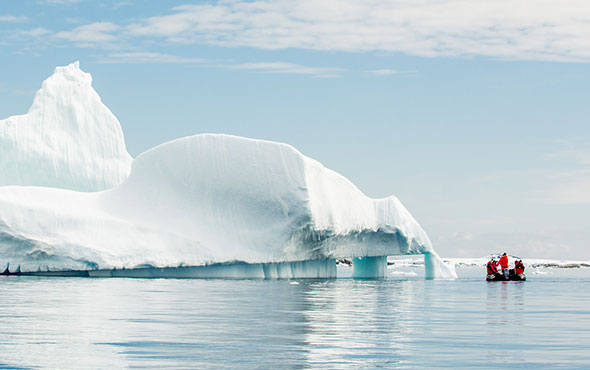




 The Americas
The Americas
 Europe, Middle East and Africa
Europe, Middle East and Africa Australia, NZ and SE Asia
Australia, NZ and SE Asia